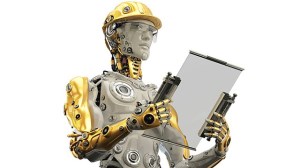Robots are on track to wipe out almost a tenth of the world’s manufacturing jobs, a report from Oxford Economics has found.
Most job losses will occur in developed nations, including Australia, mostly in lower-income industrial areas.
While the rise of robots would boost productivity and economic growth by creating jobs in yet-to-exist industries, existing business models across many sectors would be seriously disrupted.
Manufacturing could lose 20 million positions by 2030, making the sector 8.5% smaller than “if robots were not remaking the market,” according to the report titled How Robots Change the World.
The report estimates that each new industrial robot eliminates 1.6 manufacturing jobs on average. It calls on governments to prepare with policies including better training and welfare programs, and a universal basic income.
It suggests that in Australia, South Australia is most vulnerable to the future robot rollout.
The state is Australia's most manufacturing intensive but has the slowest-growing economy and low levels of manufacturing productivity, the report revealed.
"For both people and businesses, the effects of these job losses will vary greatly across countries and regions, with a disproportionate toll on lower-skilled workers and on poorer local economies," said CEO and chief economist at Oxford Economics, Adrian Cooper.
"In many places, the impact will aggravate social and economic stresses from unemployment and income inequality in times when increasing political polarisation is already a worrying trend."
Robots will do ‘more good than harm’
But the report suggests that, overall, robots will do more good than harm.
It found a 1 per cent increase in the stock of robots per manufacturing worker leads to a 0.1 per cent boost to productivity, measured by output per worker — enough to drive meaningful economic growth.
A 30 per cent rise in robot installations above Oxford Economics' baseline forecast for 2030 would, for example, trigger a 5.3 per cent boost to global GDP in that year — equivalent to $4.9 trillion to the global economy that year, or an economy greater than the projected size of Germany's.
Fuelled by advances in artificial intelligence (AI), machine learning and engineering, robots will also play a bigger role in services sectors including retail, healthcare, hospitality and transport, as well as construction and farming.
But the report found that jobs in less structured environments – and which demand compassion, creativity or social intelligence – were likely to be carried out by humans for decades to come.
About 20 million robots predicted by 2030
The number of robots in use worldwide multiplied three-fold over the past two decades, to 2.25 million.
Manufacturing accounted for more than 86 per cent of the world's operational stock of industrial robots at the end of 2016, according to the International Federation of Robotics.
About one-in-every-three new robots worldwide is now installed in China, which accounts for around one-fifth of the world's total stock of robots – up from just 0.1 per cent in 2000.
It is expected the global stock of robots will multiply even faster over the next 20 years, reaching as many as 20 million by 2030.
The report projects China could have as many as 14 million industrial robots in use by 2030, dwarfing figures for the rest of the world as China further consolidates its position as the planet's primary manufacturing hub.
1.7 million jobs lost to robots since 2000
About 1.7 million manufacturing jobs have already been lost to robots since 2000, including about 400,000 in Europe, 260,000 in the US, and 550,000 in China.
The impact happens over time. Within the first year of a robot's installation, roughly 1.3 workers are displaced, on average, from their job – this extends to 1.6 workers over subsequent years.
The report uses a "Robot Vulnerability Index" to highlight the geographic areas of major economies that are most at risk from the rise of the robots.
The index ranks the most – and least – vulnerable regions of seven key advanced economies: the US, Germany, the United Kingdom, France, Japan, South Korea and Australia.
It found that, on average, each additional robot installed in these regions leads to almost twice as many job losses as those in higher-skilled regions of the same country.
South Australia most vulnerable
In Australia, Victoria and NSW are less vulnerable to robots than South Australia and are also faster growing.
"Melbourne and its surrounding area have a diversified manufacturing base, although one that is declining in relative importance as Melbourne's service economy strengthens," it said.
"Victoria's manufacturing productivity is also higher than that of South Australia."
It said NSW looks much less vulnerable than either Victoria or South Australia.
This is because the labour market has become less dependent on manufacturing jobs in recent years, while manufacturing productivity has improved.


